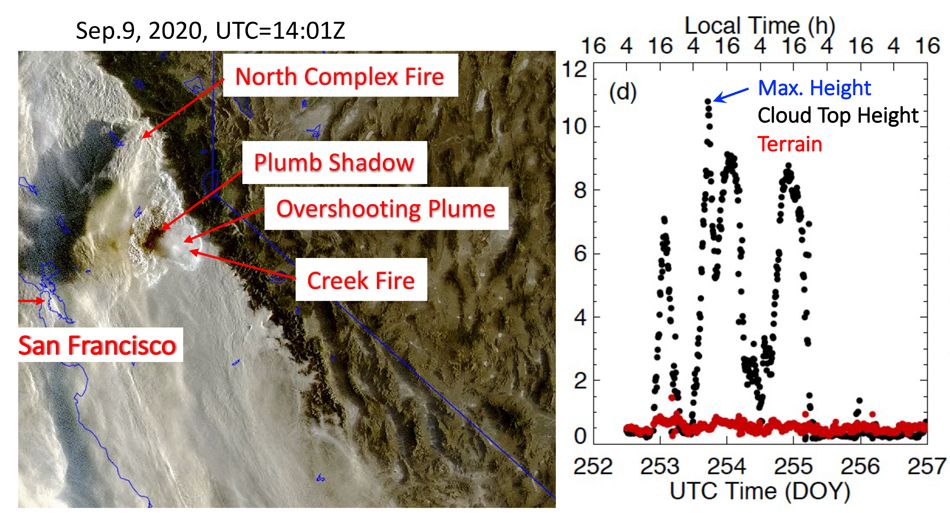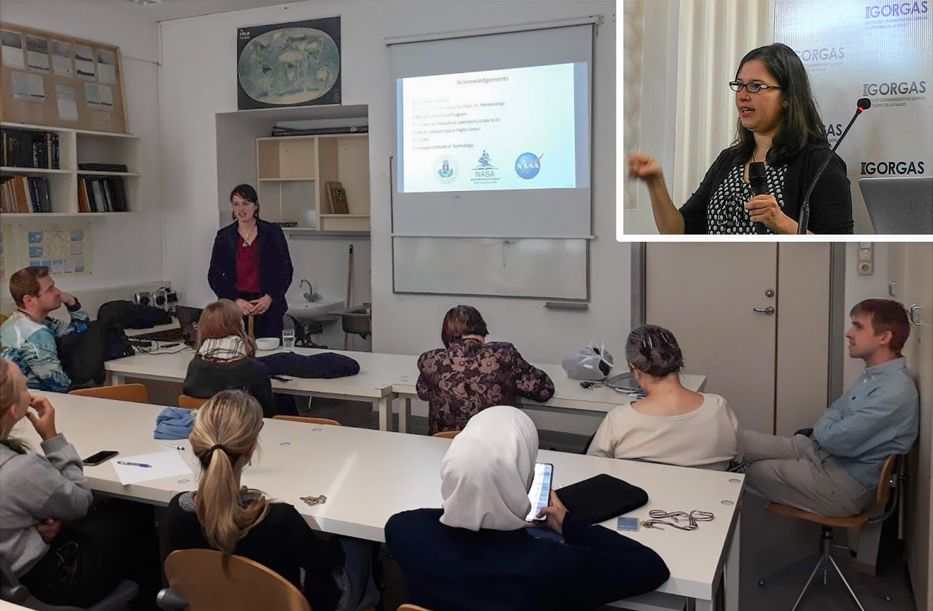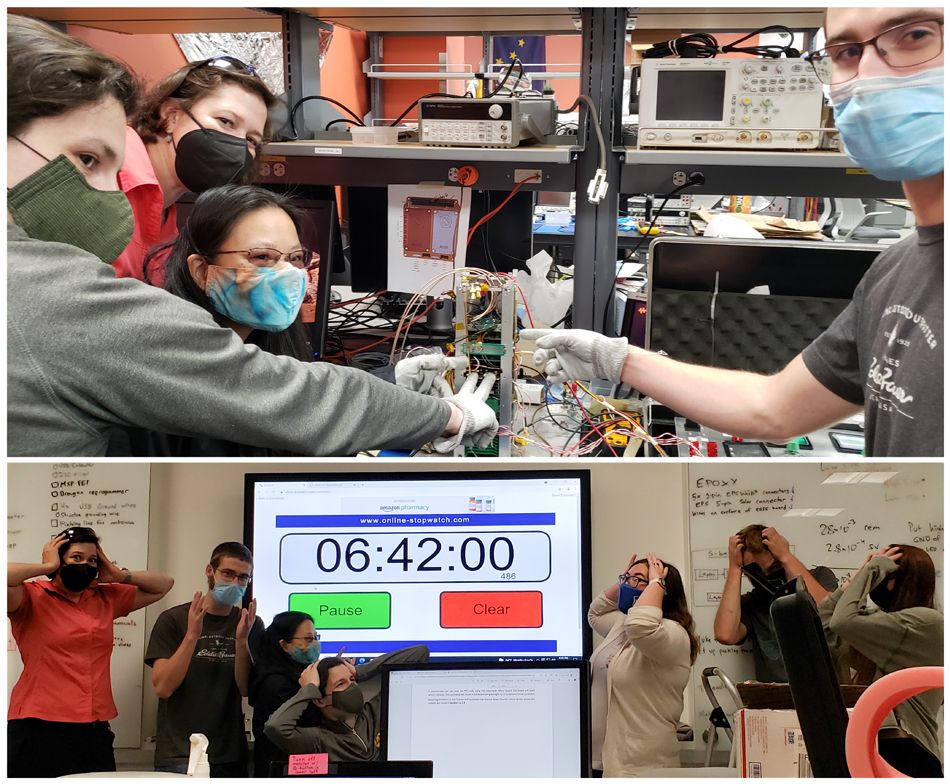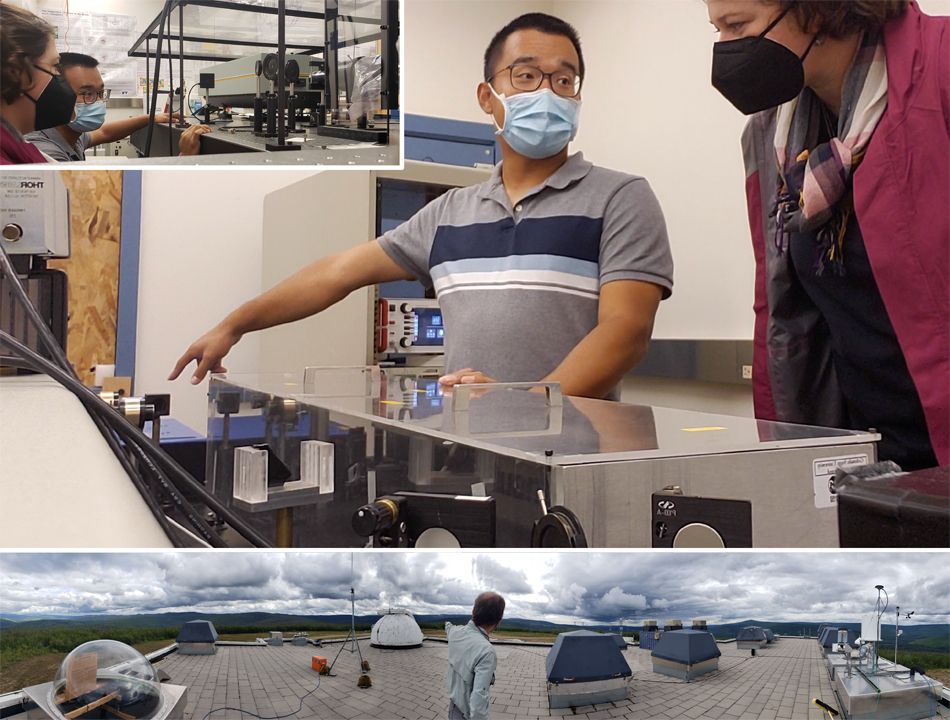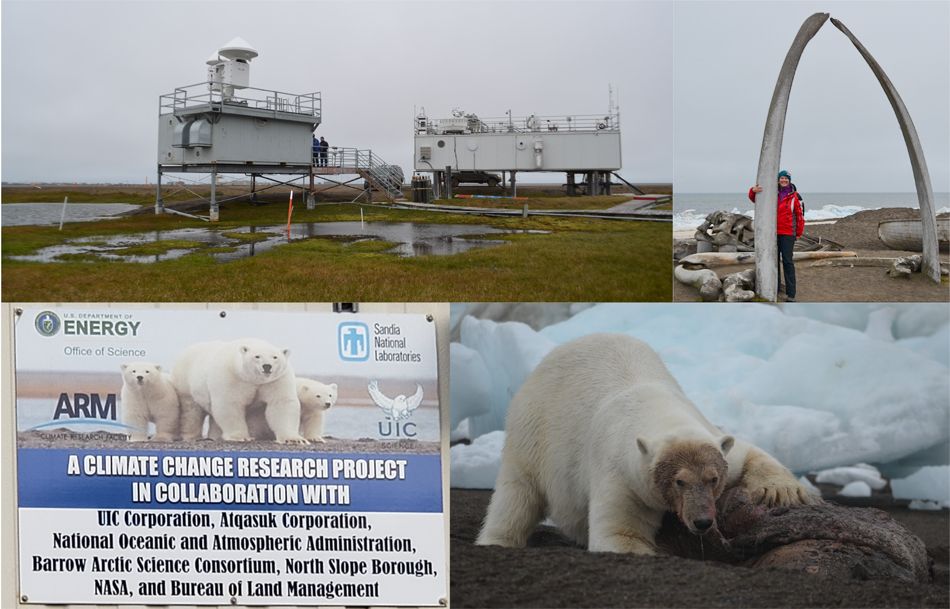Early Career Scientist Spotlight
Dr. Mariel D. Friberg
Last name in Hispanic culture: Friberg-Aponte
Atmospheric Scientist
Climate and Radiation Laboratory
What is your research focus?
My research focuses on investigating new air quality and wildfire observations using emerging stereoscopic (stereo matching) techniques, which rely on the parallax principle to estimate stereo height. Specifically, the wind and aerosol imaging techniques that I use pair various combinations of low Earth orbit (LEO) and geostationary orbit (GEO) satellites. Our stereoscopic imagery algorithm uses consecutive and concurrent images retrieved by two satellite sensors with different observing angles to track the top height and velocity of optically thick features, such as wildfire plumes and clouds. We compare these stereo retrievals to ground- and airborne-based observations and numerical weather model simulations and analyze how the simulation’s plume injection time, plume/cloud top height, and wind velocity differ from remotely sensed stereo observations. This work leverages my research experience developing data fusion physical techniques to constrain chemical transport model outputs for regional wildfire and air quality applications using satellite-, aircraft- and ground-based observations.
Credit: Carr et al. (2020)
What is one research project that you are particularly excited about, and why?
My favorite would have to be my current NASA ROSES New (Early Career) Investigator Program (NIP) project titled “Investigation of Wildfire Convection and Boundary Layer Dynamics with LEO-GEO and GEO-GEO Stereo-Imaging/Tracking Aerosol Plumes.” In addition to being a newly minted Principal Investigator, I get to work with a phenomenal team of scientists, professors, and students on a project that has the potential to improve wildfire and air quality transport model simulations.
What science questions do you investigate?
As part of my NIP grant, I’m investigating the science question below using the stereo wind imaging techniques described in Carr et al. (2020).
- What are the vertical distribution properties of wildfire plumes in deep convection?
- What convective wildfire dynamics contribute to vertical transports of aerosol plumes within the atmosphere?
- What complex and localized wildfire meteorology (convective vertical motion and characteristics) is captured by satellites but not by models?
How did you end up working at NASA Goddard?
In 2013, I was selected for the NASA-University of Virginia Intensive Summer School in Computing for Environmental Sciences (ISSCENS) and NASA internship program. I was fortunate to be mentored by the exceptional Atmospheric Chemistry Senior Scientists, Dr. Mian Chin, at NASA’s Goddard Space Flight Center (GSFC) in the Earth Science Division. This enriching and productive research internship experience led me to integrate remote sensing techniques into my doctoral research. Thanks to the support of my NASA and Georgia Tech advisors, my proposals led to my NASA MUREP Harriett G. Jenkins Graduate Program (JGFP) and NASA Postdoctoral Program Fellowships. My NASA experiences are possible thanks to the community’s efforts.
Credit: Mariel D. Friberg
Who inspires you?
While in the flow of the present, many people and things inspire me. This inspirational flow is magnified when I interact with colleagues, mentors, and friends in this mental state. When I step back, I realize the most enjoyable part of my career is a daily occurrence. I get to work on being in a state of inspirational flow that simultaneously develops me personally and professionally.
What is one of your favorite moments in your career so far?
This question reminds me of a Möbius strip. The answer depends on how you define moments. Some of my favorite moments in my career are realized or enjoyed in hindsight. As I process events, my awareness increases, failures become successes with time, and catalyst moments become clear.
Some of my NASA-related full circle-type career moments include:
- Attending, being mentored, mentoring, and serving as a NASA MUREP JGFP panelist at the very supportive Southern Regional Education Board (SREB) Institute on Teaching and Mentoring Conference
- Participating in the 2016 National Center for Atmospheric Research Advanced Study Program Summer Colloquium and Workshop - Advances in Air Quality Analysis and Prediction: The Interaction of Science and Policy, I learned invaluable lessons and met future colleagues and collaborators.
- Presenting my scientific work in Spanish at invited talks in Panamá during my NPP in 2018). As a bilingual Puerto Rican, this was a lifelong dream.
- Meeting Dr. Nicole Molders at the 2018 NASA Established Program to Stimulate Competitive Research (EPSCoR) GSFC visit. We subsequently collaborated on a selected Alaska NASA ESPCoR grant and have been working together ever since. Recently, I met several of her UAF colleagues and future collaborators.
- Mentoring my first NASA summer intern in 2020 funded by the Alaska Space Grant Program, being part of the student’s graduate committee, and facilitating that same summer intern join our research group in the Summer of 2021
- Actively contributing to various Diversity, Equity, and Inclusion efforts on and off GSFC campus
Credit: Mariel D. Friberg
Credit: Mariel D. Friberg
What is a fun fact about you?
I recently had my first encounter with a live polar bear in Utqiaġvik, AK, the northernmost city in the US. The chance encounter occurred on our way back to our lodging after a DOE Atmospheric Radiation Measurement (ARM) North Slope of Alaska (NSA) Research Facility site visit in August 2021.
Credit: Mariel D. Friberg
Biography
Home Town:
Cayey, Puerto Rico and Norfolk, Virginia
Undergraduate Degree:
B.S. in Civil Engineering, Georgia Institute of Technology, Atlanta, GA
Post-graduate Degrees:
Ph.D. in Environmental Engineering, Georgia Institute of Technology, Atlanta, GA
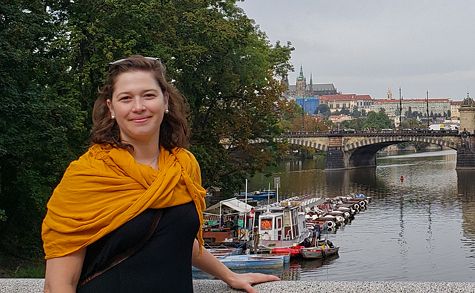
Link to Dr. Friberg's GSFC Bio

